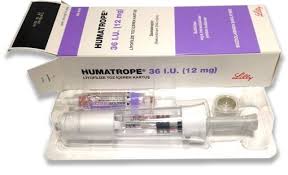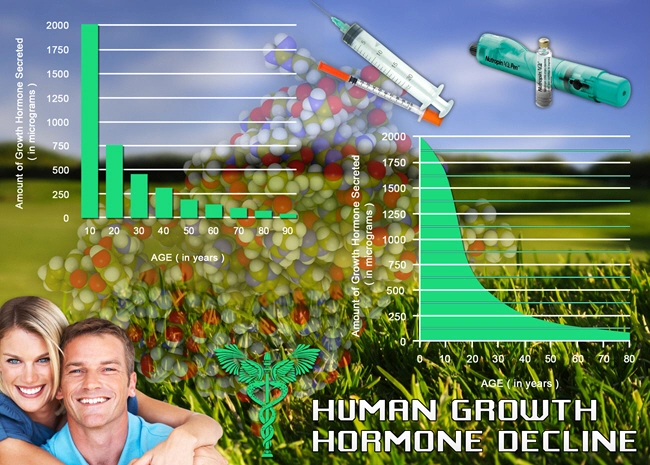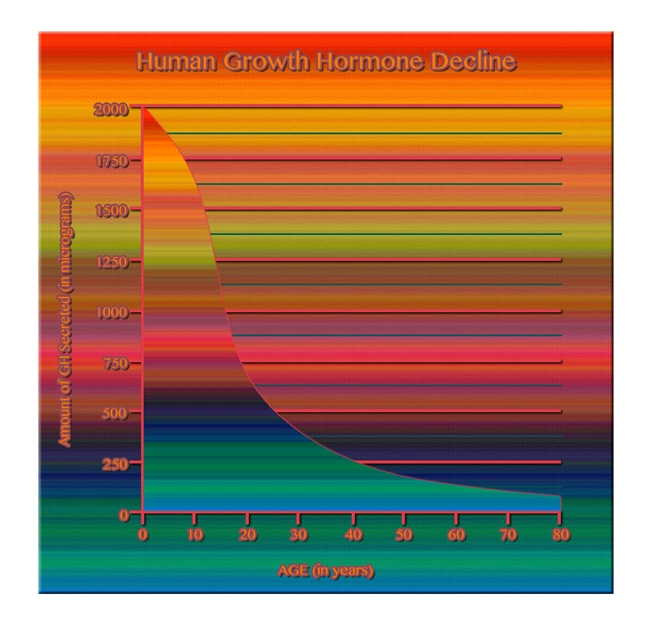
Is it possible to live to 180? Perhaps!
At our clinic, we specialize in Hormone Replacement Therapy (HRT). We offer Testosterone Replacement Therapy (TRT), Human Growth Hormone (HGH) Replacement Therapy, Sermorelin Therapy, and several other hormone replacement treatments that are designed to restore your hormones to a more youthful, healthy level.
 The health benefits of HRT are numerous: exploding energy, an improved mood, less brain fog, the return of muscular strength and stamina, ease of joint aches and pains, better sleep, and an all-out assault on the aging process.
The health benefits of HRT are numerous: exploding energy, an improved mood, less brain fog, the return of muscular strength and stamina, ease of joint aches and pains, better sleep, and an all-out assault on the aging process.
We stay abreast of all developments, studies, and research in the areas of anti-aging, health, and longevity to deliver a holistic, comprehensive treatment regimen to our clients. Keep reading to discover some recent research in the field of life extension.
Youth is wasted on the young – George Bernard Shaw.
Longevity. An extended lifespan has been the dream of humans for countless millennia. And considering that human nature has not significantly changed in thousands of years, finding the fountain of youth was as important to many in ancient times as it is today.
But in today’s 24/7, always on-the-move, tech-driven, “gotta stay connected” environment, so many people feel they don’t have enough time to accomplish a fraction of what they insist are their goals. “I’m just too busy” is an all-to-common refrain that is not always a polite brush-off; the average person IS too busy.
There’s no question that contemporary society is far more complicated than decades past. Consider these examples:
- In the past, we had no need to pump our own gas. Within a moment after pulling up to the pumps, a friendly attendant would emerge to fill up the tank, check the oil, clean the windshield, check the tires, and anything else that looked slightly amiss. With the advent of self-service, those days are a distant
 memory for the dwindling population that enjoyed that luxury.
memory for the dwindling population that enjoyed that luxury. - Consider how much work our computers demand. Remembering dozens of usernames and passwords, deleting spam, subscribing and unsubscribing to several of our hundreds of unread emails, maddening demands to enter a six-digit code into the same web page we have logged into for years, booking your trip online (sorry, no more travel agents), acting as our own salesperson and cashier when shopping online all add up to immeasurable hours of hidden toil.
- In ancient times we had live operators to answer our business calls and a live person behind a desk to welcome us for our appointment. Now we have the pleasure of hearing the entire menu of “Press 1 for…” ad nauseam and kiosks that require us to self-check in. And please don’t forget to return your shopping cart to the parking lot cart collection station and drop something into the recycle bin.
- Notice the creeping encroachment of self-checkout registers at your local grocery store. If you don’t believe that is the future, think back to when self-service gas stations were dismissed as a radical idea.
- How about the joys of busing your own table at Starbucks or any fast-food establishment? Yes, it’s a minor task, but that’s the point. These hidden, added duties ARE ALL MINOR TASKS! But they certainly add up.
- We haven’t touched on the challenges of commuting (added fuel costs, crowded and, at times, crime-ridden public transportation, the expense of maintaining a car), air travel (booking our flight, being subjected to the inconvenience of security screening of our person and luggage, rebooking canceled flights), and numerous other little hidden assignments all add up to a monstrous burden that chips away at our vanishing leisure time.
All of these developments add to the theory that we really need extra time on this planet. These above time-robbers are not going away, so we need to adapt to this new environment, and living longer will give us the time to do that.
But all is not lost
That’s right. Let’s look at the statistics. In the 1500s, people had a life expectancy of around 30. In 1900 the average American man’s life expectancy was 46.6. For women, it was 48.7. Fast forward to 2017; the numbers have climbed to 76.1 for men and 81.1 for women.
The good news is that the arc of lifespan is upward. But the bad news is that things may be going in the wrong direction due to the COVID virus and the resultant economic and emotional toll it took. This means it is more important than ever to prioritize optimal health.
The Super Agers Study
The Mesulam Center for Cognitive Neurology and Alzheimer’s Disease at Northwestern University Feinberg School of Medicine in Chicago is researching aging and its accompanying neurological diseases. The Super Ager’s study is co-directed by Changiz Geula, a research professor at the Mesulam Center.
To be labeled a SuperAger is not a title bestowed lightly. A SuperAger has demonstrated the cognitive ability of someone decades younger. To invoke an ancient cliché, “many are called, but few are chosen.” In a 2017 study, the lab evaluated more than 1,000 folks who thought they had an excellent memory. Merely 5 percent made it to the final research.
To be accepted into the research, a person must be over 80 and undergo extensive, in-depth cognitive testing. Acceptance only happens if the person’s memory is as good or better than the cognitive standard for people in their 50s and 60s. The volunteers are subject to several mental tests: episodic memory, psychological well-being, and colorful 3D brain scans. Once accepted, cognitive testing and brain scans are repeated annually.
“SuperAgers are required to have outstanding episodic memory — the ability to recall everyday events and past personal experiences — but then SuperAgers  just need to have at least average performance on the other cognitive tests,” said cognitive neuroscientist Emily Rogalski, a professor of psychiatry and behavioral sciences at Feinberg School of Medicine.
just need to have at least average performance on the other cognitive tests,” said cognitive neuroscientist Emily Rogalski, a professor of psychiatry and behavioral sciences at Feinberg School of Medicine.
Only about 10% of people who apply to the program meet those criteria, said Rogalski, who developed the SuperAger project. “It’s important to point out when we compare the SuperAgers to the average agers, they have similar levels of IQ, so the differences we’re seeing are not just due to intelligence,” she said.
Analysis of the data over the years has yielded fascinating results. After a decade of research and observation, Geula and his fellow researchers concluded that SuperAgers have brains that look 2 to 3 decades younger than normal for their advanced age, and their brains are resistant to certain protein interactions linked to signs of Alzheimer’s disease. Their brains also have elevated levels of specific neurons scientists believe are crucial to communication.
Most people’s brains shrink as they grow older. In SuperAgers, however, researchers have found that the cortex, responsible for thinking, decision-making, and memory, stays thicker and shrinks slower than those of people in their 50s and 60s.
A typical SuperAger’s brain, donated to the program by participants postmortem, also has larger, healthier cells in the entorhinal cortex. It’s “one of the first areas of the brain to get ‘hit’ by Alzheimer’s disease,” said Tamar Gefen, an assistant professor of psychiatry and behavioral sciences at Northwestern, in an email.
The entorhinal cortex has direct connections to another key memory center, the hippocampus, and “is essential for memory and learning,” said Gefen, the lead author of a recent study comparing the brains of deceased SuperAgers with those of older and younger cognitively normal people and people diagnosed with early Alzheimer’s.
The study also determined that SuperAger brains had three times fewer tau tangles or unusual protein formations within nerve cells than the brains of cognitively healthy subjects. Tau tangles are a trademark sign of Alzheimer’s and other dementias.
“We believe that larger neurons in the entorhinal cortex suggest that they are more ‘structurally sound’ and can perhaps withstand neurofibrillary tau tangle formation,” Gefen said.
formation,” Gefen said.
Gefen also found the brains of SuperAgers had many more von economo neurons, a rare type of brain cell, which so far has been found in humans, several mammals, and songbirds. The von economo neurons are believed to allow speedy communication throughout the brain. Another theory is that these neurons give humans and apes an intrinsic advantage in social situations.
The von economo neurons were found in the anterior cingulate cortex, which forms a collar in the front of the brain linking the cognitive, logical side with the emotional, intuitive side. The anterior cingulate is thought to be important for controlling emotions and paying attention — a requirement for good memory.
When totaled, these findings seem to point to a genetic connection to becoming a SuperAger, Gefen said. However, she added: “The only way to confirm whether SuperAgers are born with larger entorhinal neurons would be to measure these neurons from birth until death. That obviously isn’t possible.”
What about the environment? SuperAgers share similar traits, said Rogalski. These folks stay active physically. They tend to be optimistic. They refuse to let their brain get lazy, and they are constantly reading or learning something unique, new, and challenging — and most continue to work well into their 80s. SuperAgers do not live in isolation. They have a close circle of family and friends and often volunteer in their community.
“When we compare SuperAgers to normal agers, we see that they tend to endorse more positive relations with others,” Rogalski said.
More longevity studies are ongoing.
The SuperAger study is not the only research focused on aging and cognitive decline. There is a nascent amount of new research on aging and how a world of longevity and optimal health would function.
A 2021 study in Nature estimated that humans could live until 150. A September 2021 study in the Royal Society Open Science journal said there is no upper limit. Other studies say nanotechnology might delay death by over 100 years.
Nir Barzilai, founding director of the Institute for Aging Research at Albert Einstein College of Medicine, stated, "When you’re over 100, and you’re healthy...life is good. What people are unhappy about is being sick. We need to target the aging process.” In his view, we’re not asking the right questions.
 It’s not quantity or the number of years we are alive that matters—it’s quality, how long our health lasts. In scientific terms, it’s not lifespan but healthspan we need to be concerned about—and targeting the aging process is the primary goal.
It’s not quantity or the number of years we are alive that matters—it’s quality, how long our health lasts. In scientific terms, it’s not lifespan but healthspan we need to be concerned about—and targeting the aging process is the primary goal.
As opposed to stopping aging completely and then reversing it, Barzilai thinks the real goal is to slow aging in a younger body. “In the future, probably the easiest thing to do will be to take a 20-year-old and give him a treatment once a week or once a month or once a year to basically erase the epigenetics of aging,” he said.
“Then we have a Peter Pan who will live longer than 115. I think the next 10 years are going to be eye-opening,” Barzilai predicts. “We’re going to increase our healthspan all over the body. It’s already happening now.”
Are we ready for this brave new world?
Getting caught up in the excitement and euphoria of living a long, healthy life is easy. However, extended lifespans could have unintended consequences.
A swollen population of retirees will burden already stressed Social Security earmarks and private pensions. These retirement plans were built on the retirement age of 65, which meant that the years of payout would be limited. With extended longevity, something will have to give.
Another consideration is the strain on our healthcare systems. The rate of senior citizens declaring bankruptcy in 2022 has doubled since 1999, and the primary cause is catastrophic medical expenses. This is a double disaster for both the retiree and the healthcare system that must absorb the unpaid costs.
Our current social safety nets like Medicare are not made to handle an exploding senior population. Being over 65 often sees chronic conditions like cancer, heart attack, stroke, and diabetes arrive to crash the party. Keeping people alive for long periods is challenging—urging them to live healthily in old age is even more challenging.
Before she passed away in 1997, the 122-year-old Jeanne Calment was the oldest person alive, according to Anthony Davison, co-author of the Royal Society Open Science study. This could happen to more of us. Davison compared the likelihood of aging until 130 to an annual coin flip.
“If someone reaches 110 on their birthday, they flip a coin,” he said. “If it comes up heads, they live to 111; if it comes up tails, then they're going to die soon.” The odds of someone 110 living until 130 is the chance of getting 20 coin flips all coming up heads...an extremely remote possibility. “It could happen,” said Davison. “And if you have a million people flipping coins, then it's quite likely to happen.”
According to Davison, the world’s population is growing and getting healthier (especially thanks to lower rates of smoking), and breakthroughs in medical treatments in Western countries.
“In many countries, the oldest are actually among the fastest growing segment of the population,” Geula said. “When we compare them to the generation that was born in the ’20s or ’30s, just nutrition alone is a huge factor.”
Geula pointed out that the millennial generation, with its wellness obsession and unprecedented access to all kinds of vitamins, pills, powders, shakes, and  sprays, will be an aging test case on the effect of vastly improved nutrition on life extension.
sprays, will be an aging test case on the effect of vastly improved nutrition on life extension.
Sounds good. But, again, consider the strain on our social safety nets. This increase in active, healthy seniors will force a re-evaluation of our cultural norms. “Economically, if we are only thinking of productivity, then we will run into a problem,” Geula said.
“Not everyone can afford to retire, and the system cannot handle an aging population with increasing health problems. We will have to consider what is our definition of productivity and what our values are as a society.”
Recently, Professor Jay Olshansky was at a party for Super Agers as part of an ongoing research study. Olshansky, a professor at the Center on Aging at the University of Chicago, felt privileged to be in the rarefied presence of the 1 percent of our population whose cognitive abilities do not vanish with age.
“When I sat around the table with them, if I closed my eyes, I could’ve been at a roundtable with a bunch of CEOs of major companies,” Olshanksky stated. “They were that sharp. Their age was completely irrelevant.”
The SuperAgers are essentially the closest to immortality humans have ever been. When Olshansky arrived at the SuperAgers party, he said that as someone who studies aging for a living, he was spellbound at the sight of all these people in one room. “It’s a wonderful thing to see,” he said. “It doesn't happen to everyone, but when it does happen, it’s remarkable.”
85-year-old Carol Siegler is a textbook example of a SuperAger. Despite hitting the gym, volunteering, being a social butterfly, and continually challenging her mind, she’s restless. “I’m bored. I feel like a Corvette being used as a grocery cart,” said Siegler, from the Chicago suburb of Palatine. Siegler is a cognitive “SuperAger,” the owner of a brain as sharp as people decades younger.
“I’ve auditioned twice for ‘Jeopardy!’ and did well enough on it to be invited to the live auditions. Then Covid hit,” said Siegler. “Who knows how well I would have done,” she laughed. “What I have told my children and anybody else who asked me: ‘I may know an awful lot about Beethoven and Liszt, but I know very little about Beyoncé and Lizzo.’”
Looking back at her life, Carol Siegler recognizes many SuperAger traits. As a young child during the Great Depression, she taught herself to spell, play piano, and read Hebrew at her grandfather’s knee, poring over his weekly Yiddish newspaper.
“I have a great memory. I’ve always had it,” Siegler said. “I was always the kid that you could say, ‘Hey, what’s Sofia’s phone number?’ and I would just know it off the top of my head.”
Upon graduating from high school at 16, she immediately went to college. Siegler earned her pilot’s license at age 23 and started a family business in her basement that expanded to 100 employees. At 82, she won the American Crossword Puzzle Tournament for her age group, which she said she entered “as a gag.”
After seeing an advertisement for the SuperAger program on television, Siegler thought it sounded like fun. Being chosen as a SuperAger was exhilarating, Siegler said, but she knows she was born lucky. “Somebody with the same abilities or talents as a SuperAger who lived in a place where there was very little way to express them might never know that he or she had them,” she said. “And that is a true shame.”
Not everyone buys into the euphoria of extreme longevity.
Olshansky feels all of this hullabaloo of slowing aging is a pipe dream. “To suggest that there’s no upper limit to human longevity is equivalent to suggesting that there’s no limit to how fast we can run,” he said. The current world record is 3 minutes, 43 seconds for the one-mile run, and it would be essentially impossible for our bodies to trim that time down to two minutes.
Similarly, there are inherent limits to the functions of our bodies. Our teeth get weaker over time. We have nonreplicating parts of the body, like muscle fibers or neurons. The plasticity of our brain—its ability to adapt to changing circumstances—deteriorates. “Aging marches on,” said Olshansky. “We cannot stop the process, but we are searching for ways to influence it.”
Professor Olshansky is not the only voice of skepticism. Most mainstream medical professionals agree that if the technology to extend life to extreme limits becomes available, that date is in the distant future and is out of reach for everyone alive today.
That dash of cold water hasn’t stopped the flow of money pouring into longevity research, especially since tech billionaires and millionaires, now aging, face the  prospect of their own mortality. In September 2013, Google cofounder Larry Page started Calico; a research lab focused on the biology of aging.
prospect of their own mortality. In September 2013, Google cofounder Larry Page started Calico; a research lab focused on the biology of aging.
Peter Thiel is an investor in Unity Biotechnology, a company creating drugs to stop cellular senescence (cells becoming toxic before dying). Jeff Bezos has invested in anti-aging startup Altos Labs, which wants to halt aging by directly reprogramming cells. Barzilai himself is hoping to get funding for a study on Metformin, a prescription drug for diabetics that has shown promise in slowing aging.
Perhaps these wealthy investors are doomed to face the realities of old age. Then again, perhaps not. Time will tell.
To give yourself the best chance of staying around to enjoy a long, healthy lifespan, contact us for a FREE, no-obligation discussion about the incredible benefits of Hormone Replacement Therapy (HRT)!
https://www.thedailybeast.com/maximum-human-lifespan-could-reach-age-150-thanks-to-nanotechnology-and-drugs-but-society-may-not-be-ready
https://www.baxterconsultinggroup.com/unity-biotechnology
https://www.technologyreview.com/2021/09/04/1034364/altos-labs-silicon-valleys-jeff-bezos-milner-bet-living-forever/
https://www.cnbc.com/2019/05/08/techs-next-big-disruption-could-be-delaying-death.html
https://www.seniorliving.org/history/1900-2000-changes-life-expectancy-united-states/
https://www.simplyinsurance.com/average-us-life-expectancy-statistics/
https://www.registerednursing.org/articles/healthcare-costs-by-age/
https://www.cnn.com/2022/11/26/health/superager-secrets-good-memory-wellness/index.html
Contact Us Today For A Free Consultation
Dear Patient,
Once you have completing the above contact form, for security purposes and confirmation, please confirm your information by calling us.
Please call now: 1-800-380-5339.
Welcoming You To Our Clinic, Professor Tom Henderson.

- Finally! A Safe, Effective and Easy Way to Slow Aging: Genotropin HGH Product [Last Updated On: February 17th, 2025] [Originally Added On: June 24th, 2020]
- Metformin: The First Effective Anti-Aging Drug? [Last Updated On: February 16th, 2025] [Originally Added On: June 29th, 2020]
- A new study says Human Growth Hormone (HGH) can reverse aging! [Last Updated On: November 13th, 2025] [Originally Added On: June 30th, 2020]
- What Metabolism Reveals About Aging and Mortality [Last Updated On: February 17th, 2025] [Originally Added On: December 1st, 2020]
- Stanford University: A Way to Reverse Age-Related Health Issues is a Real Possibility [Last Updated On: August 15th, 2025] [Originally Added On: February 4th, 2021]
- The Six Biggest Hormone Disruptors to Avoid [Last Updated On: October 8th, 2025] [Originally Added On: May 16th, 2021]
- Laugh It Up! Boost Your HGH FAST [Last Updated On: August 14th, 2025] [Originally Added On: June 7th, 2021]
- Why Poor Sleep Quality is a Serious Detriment to Your Health [Last Updated On: October 6th, 2025] [Originally Added On: June 12th, 2021]
- Scientists Bold Prediction: We'll Soon Extend Life Well Beyond 120” [Last Updated On: June 1st, 2025] [Originally Added On: August 24th, 2021]
- Can My Hormones Make Me Fat? [Last Updated On: August 13th, 2025] [Originally Added On: September 1st, 2021]
- Testosterone Therapy may protect Telomeres and slow aging [Last Updated On: February 16th, 2025] [Originally Added On: September 14th, 2021]
- Minoxidil: A potential cure for baldness? [Last Updated On: November 7th, 2025] [Originally Added On: November 16th, 2022]
- The Quest for the Secret of Longevity [Last Updated On: September 30th, 2025] [Originally Added On: November 24th, 2022]
- Jeff Bezos Wants to Stop Aging! [Last Updated On: October 3rd, 2025] [Originally Added On: November 24th, 2022]








